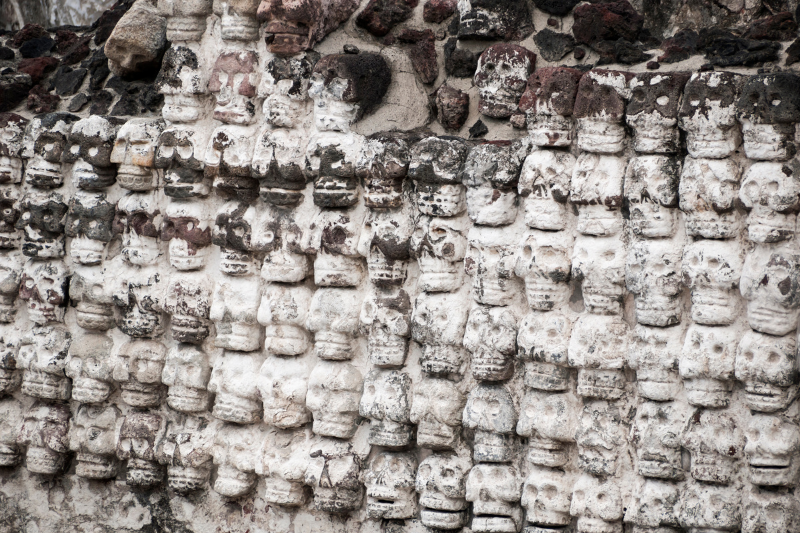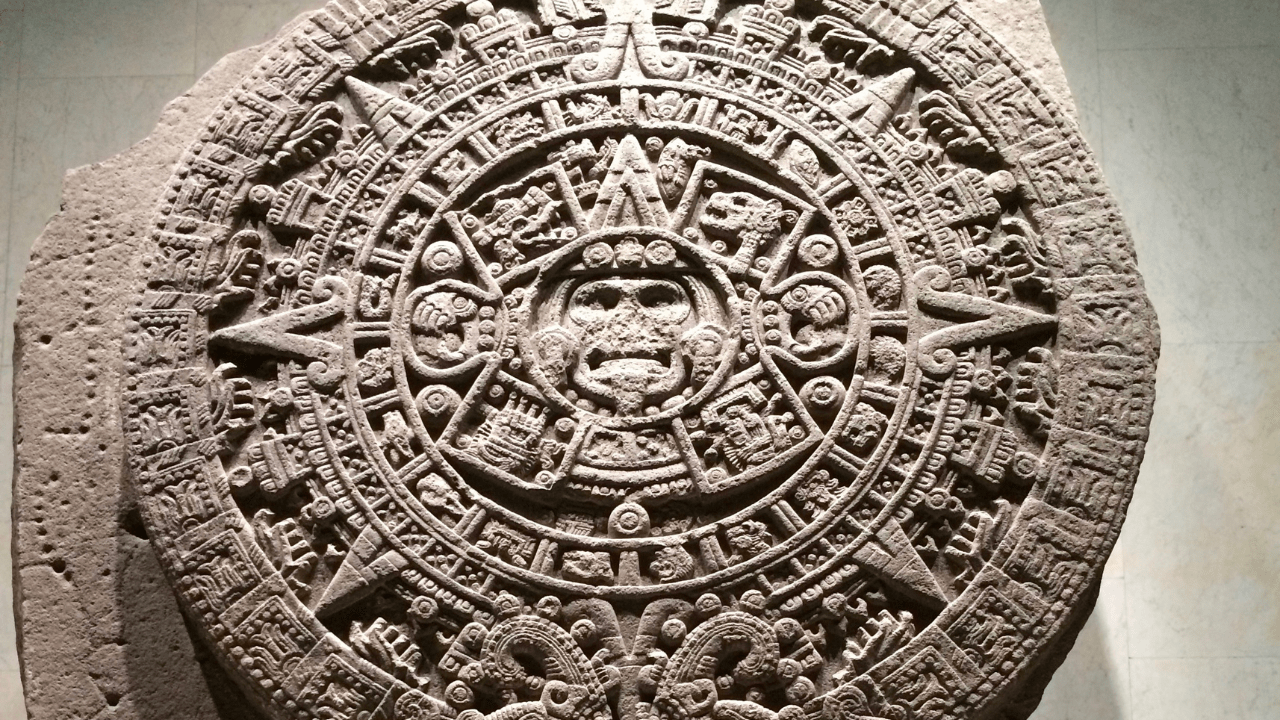The Aztec culture holds immense significance for both Mexico and the world. First and foremost, the Aztecs established one of the greatest civilizations in Mesoamerica, leaving a lasting impact on the region’s history.
Their achievements in agriculture, architecture, and engineering, such as the creation of ingenious floating gardens called chinampas, demonstrated their advanced knowledge and innovative spirit.
Furthermore, the Aztecs’ cultural contributions continue to shape Mexican identity and heritage.
Their intricate artwork, including vibrant murals and intricate stone carvings, showcased their artistic mastery.
Aztec empire mythology and religious practices, with their pantheon of gods and ritualistic ceremonies, have deeply influenced Mexican spirituality and beliefs.
On a broader scale, the Aztec civilization empire played a pivotal role in shaping the world’s understanding of ancient Mesoamerican cultures.
Their complex social structure, advanced agricultural techniques, and sophisticated calendar system have fascinated historians, archaeologists, and anthropologists for centuries.
The Aztecs’ tragic encounter with Spanish conquistadors and subsequent fall also marked a significant turning point in the history of European colonization in the Americas.
By studying and appreciating the Aztecs and Mayan history and culture, we gain a deeper understanding of the diverse and rich history that has shaped both Mexico and the world.

The Rise of the Aztecs
The Aztec Empire originated from a group of nomadic tribes known as the Mexica, who migrated to the Valley of Mexico.
According to historical accounts, their journey began around the 13th century AD. Legend has it that they were guided by their patron deity, Huitzilopochtli, who instructed them to settle in a place where they would find an eagle perched on a cactus, devouring a serpent.
This mythical sign was eventually found on the island of Tenochtitlan, where the Aztec civilization flourished.
The Mexica faced many challenges in their early years, including conflicts with neighboring tribes and the struggle for survival in a harsh environment.
Through their resourcefulness and military prowess, they gradually established alliances and gained influence over surrounding territories.
This eventually led to the formation of the Triple Alliance, a powerful alliance between Tenochtitlan, Texcoco, and Tlacopan, which became the foundation of the Aztec Empire.
Archaeological evidence suggests that the settlement of Tenochtitlan began around 1325 AD. Over time, the Aztecs transformed their island city into a magnificent capital, characterized by grand temples, intricate canals, and bustling markets.
The Aztec society thrived with a structured social hierarchy, where nobles, warriors, artisans, and farmers played distinct roles.
While specific details about the Aztec origins may vary in different accounts, their legacy as a vibrant and influential civilization remains undeniable.
Their journey from humble beginnings to establishing a vast empire in Mesoamerica is a testament to their resilience and ambition, leaving a profound impact on the history and culture of Mexico.
Society and Culture
The Aztec society was structured and had a well-defined social hierarchy. At the top were the nobles and ruling class, including the emperor, his family, and high-ranking officials.
They held significant political power and were responsible for governing the empire. Below them were the warriors, who played a crucial role in expanding and protecting Aztec territories.
Artisans and craftsmen formed another important segment of Aztec society, they specialized in various trades such as pottery, weaving, and metalworking, creating exquisite artwork and useful tools.
Farmers comprised a significant portion of the population, as agriculture was the backbone of the Aztec economy.
They cultivated crops like maize, beans, and squash, utilizing innovative techniques like the chinampas (floating gardens).
To maintain harmony, the Aztecs embraced a complex system of governance. At the center was the emperor, who possessed both religious and political authority.
Surrounding him were councils of nobles and priests who assisted in decision-making. The empire was divided into provinces, each governed by a local noble appointed by the emperor.
Tribute and taxation were collected from the provinces to support the empire.
Religion played a vital role in Aztec culture, permeating all aspects of life. The Aztecs worshipped numerous gods, attributing divine significance to natural elements such as the sun, moon, and rain.
Elaborate rituals, ceremonies, and sacrifices were conducted to appease the gods and ensure the well-being of society.
Overall, the Aztecs aimed to live in harmony with their surroundings and maintain a balance between different elements of their society.
Through their well-organized government, diverse array of occupations, and spiritual beliefs, they strived to create a cohesive and prosperous civilization.
Aztec Mythology and Beliefs
One of the central deities in Aztec mythology was Huitzilopochtli, the god of the sun and war. He played a crucial role in their creation story, battling against darkness and ensuring the sun rose each day.
The Aztecs believed that human sacrifices were necessary to sustain Huitzilopochtli’s strength and maintain the cosmic balance.
Another prominent deity was Quetzalcoatl, the feathered serpent god associated with wisdom, knowledge, and fertility.
Quetzalcoatl was believed to have created humanity and was revered for his benevolence. However, Aztec mythology also spoke of a cyclical nature where Quetzalcoatl would eventually return and bring about the end of the world.
Tlaloc, the god of rain and fertility, was highly venerated as well. The Aztecs relied on agricultural abundance, and Tlaloc was seen as the provider of life-giving rains. They conducted rituals and offered sacrifices to appease Tlaloc and ensure bountiful harvests.
Beyond these major deities, the Aztecs worshipped a pantheon of gods and goddesses, each representing various aspects of nature, craftsmanship, and fertility.
They believed that these gods directly influenced everyday life, and their worship was integral to maintaining harmony and prosperity.
The Aztecs’ religious beliefs infused every aspect of their culture and society.
Achievements and Innovations
The Aztecs were known for their remarkable innovations and significant achievements that left a lasting impact on the world. Let’s delve into some of their major contributions:
Agriculture: The Aztecs developed advanced agricultural techniques, most notably the chinampas, floating gardens constructed on shallow lake beds.
These innovative gardens increased agricultural productivity and provided sustenance for the growing population.
Engineering and Architecture: The Aztecs showcased impressive engineering feats with their city of Tenochtitlan.
They constructed intricate canal systems, causeways, and aqueducts, displaying their expertise in urban planning.
Their grand temples, such as the Templo Mayor, demonstrated their architectural prowess and served as centers for religious ceremonies.
Mathematics and Astronomy: The Aztecs had a sophisticated understanding of mathematics and astronomy.
They devised a complex calendar system that accurately measured time and incorporated both solar and ritual cycles.
Their mathematical knowledge was applied in various aspects of life, including trade and agricultural calculations.
Art and Craftsmanship: Aztec artisans produced exquisite artwork, including intricate stone carvings, pottery, and vibrant murals.
Their craftsmanship displayed a mastery of technique and attention to detail, capturing the essence of Aztec mythology, religious beliefs, and daily life.
Education and Codices: The Aztecs had a system of education that provided knowledge and skills to different segments of society.
They created codices, illustrated manuscripts, which preserved important historical, religious, and cultural information. These codices remain invaluable sources of insight into Aztec civilization
The Fall of the Aztecs
The fall of the Aztec Empire can be attributed to several key factors. One major factor was the arrival of Spanish conquistadors led by Hernán Cortés.
The Aztecs initially believed Cortés to be the god Quetzalcoatl returning, as his arrival coincided with an Aztec prophecy. This misconception gave the Spanish an advantage.
Cortés and his forces took advantage of internal divisions within the Aztec Empire and forged alliances with rival tribes who were discontented with Aztec rule.
Through military strategies, superior weaponry, and diseases brought by the Europeans to which the Aztecs had no immunity, the Spanish conquistadors were able to defeat the Aztec armies.
The fall of the Aztec Empire had profound consequences. It marked the beginning of European colonization in the Americas and the end of a rich and powerful indigenous civilization.
The conquest brought about significant changes in the region, including the introduction of new languages, religions, and political systems.
The Aztec culture and way of life were greatly disrupted, leading to the loss of traditional practices and knowledge.
The impact of the fall of the Aztec Empire is still felt today. It shaped the course of Mexican history and the cultural identity of the country.
The conquest marked the beginning of a new era with far-reaching implications for indigenous peoples across the Americas.
It serves as a reminder of the complex and often tumultuous interactions between different civilizations throughout history.

